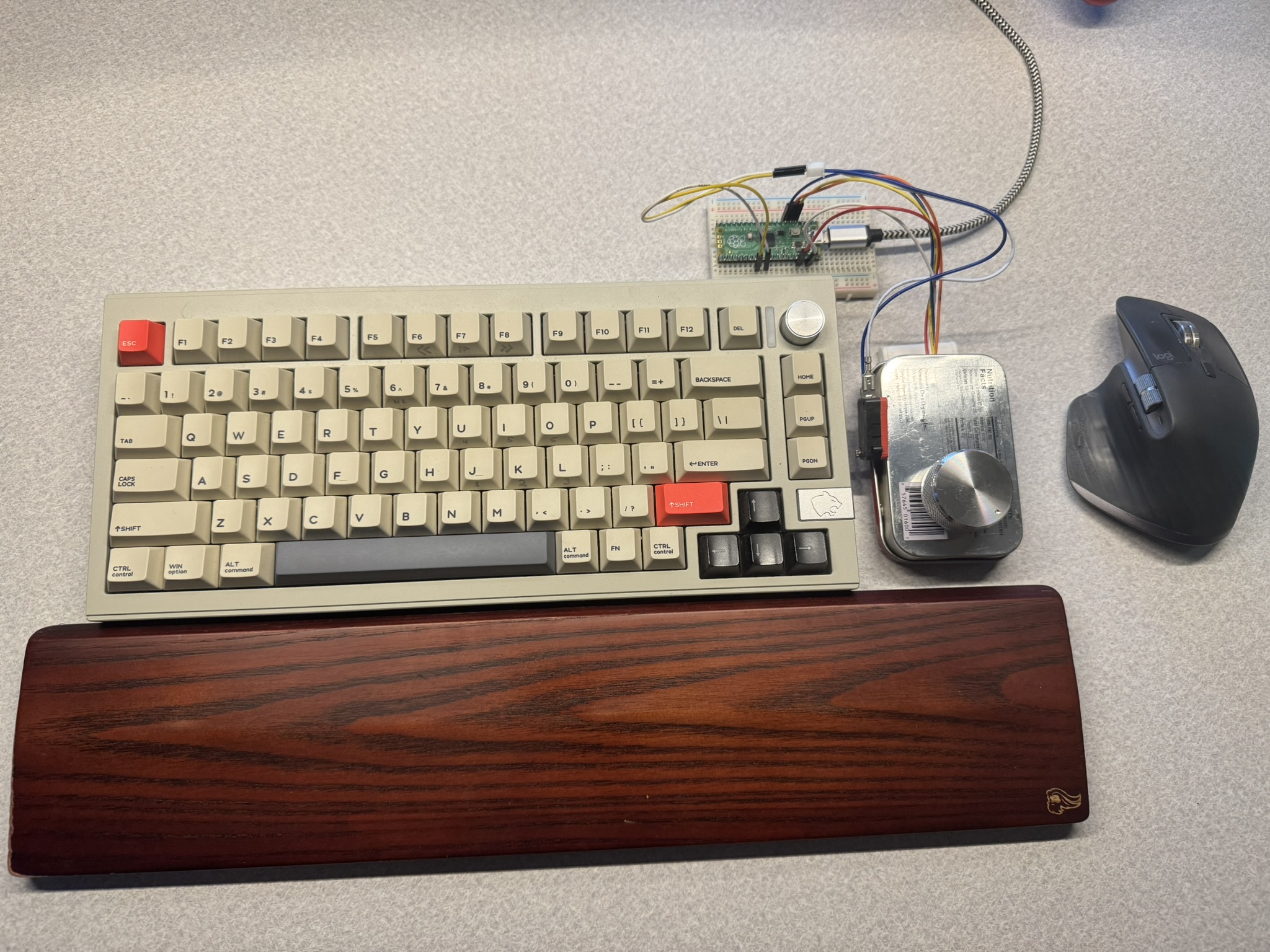
Welcome to my Blog
I make no guarantees as to the veracity of anything you're about to consume. This is just me thinking out loud. As a respected colleague once told me, I wear my brain on my sleeve.
Some things to know about me:
- My family is the best part of my life, but I don't talk about them here, because that just feels wrong. I also don't do Facebook/Meta/Twitter/X for the same reason.
- I'd like to talk to you, assuming we know each other, more than I do. This is because I suffer from migraines on the regular, however I'm hopeful that this will improve.
- Retro computing, and modern computing, is something I will geek out about with wild abandon, so do mention the subject.

Ladies and gentlemen, I give you the Doom Scroller.
This is a Raspberry Pi Pico, a breadboard, a rotary encoder, a button, a suction cup, and an Altoid tin begging to be released from this mortal coil.
I got the idea from MaxMacSTN trolling for 3D prints. I've extended his code a bit such that it does this:
| Mode Number | Clockwise Function | Counter Function | Short Press |
|---|
| 0 | Volume up | Volume Down | Play/Pause |
| 1 | Scroll Down | Scroll Up Issue | win-D |
| 2 | Next Song | Previous Song | F13 |
In my config for I3, F13 is the start for ncmpcpp, and Win-D is Rofi. You switch modes by holding down the knob for a second.
For now, the button on the side is a reset. If you hold the knob down while doing it, the Pico allows you to modify the code it runs. Mode 1 also functions well as an SDR tuner.
I have three more encoders, and I'm strongly considering adding some function before finally designing and printing something a little more permanent. I gotta tell you, doom scrolling this way is a dopamine well.
I reached this link from this link.
- Understand the system: Read the manual, read everything in depth, know the fundamentals, know the road map, understand your tools, and look up the details.
- Make it fail: Do it again, start at the beginning, stimulate the failure, don't simulate the failure, find the uncontrolled condition that makes it intermittent, record everything and find the signature of intermittent bugs, don't trust statistics too much, know that "that" can happen, and never throw away a debugging tool.
- Quit thinking and look (get data first, don't just do complicated repairs based on guessing): See the failure, see the details, build instrumentation in, add instrumentation on, don't be afraid to dive in, watch out for Heisenberg, and guess only to focus the search.
- Divide and conquer: Narrow the search with successive approximation, get the range, determine which side of the bug you're on, use easy-to-spot test patterns, start with the bad, fix the bugs you know about, and fix the noise first.
- Change one thing at a time: Isolate the key factor, grab the brass bar with both hands (understand what's wrong before fixing), change one test at a time, compare it with a good one, and determine what you changed since the last time it worked.
- Keep an audit trail: Write down what you did in what order and what happened as a result, understand that any detail could be the important one, correlate events, understand that audit trails for design are also good for testing, and write it down!
- Check the plug: Question your assumptions, start at the beginning, and test the tool.
- Get a fresh view: Ask for fresh insights (just explaining the problem to a mannequin may help!), tap expertise, listen to the voice of experience, know that help is all around you, don't be proud, report symptoms (not theories), and realize that you don't have to be sure.
- If you didn't fix it, it ain't fixed: Check that it's really fixed, check that it's really your fix that fixed it, know that it never just goes away by itself, fix the cause, and fix the process.
Here's some things I'm looking to set up and try.
An image hosting replacement for google photos and apple photos (immich)
a web based note taking app (memos)
an RSS feed reader (freshness)
a notification system (ntfy)
an IT Swiss army knife (IT-Tools)
local dns ad blocking (adguard)
YT downloader (pinch flat or metube)
containerized browser (kasm)
Home automation (home assistant)
recipe hosting (mealie or tandor)
personal blog (grav)
media consumption (plex plus arrrr)
a way to share text or images quickly (pastebin)
privacy front end for reddit, YouTube, etc (redline, invidious, etc)
coding/scripting tools (vscode)
A front end for the entire system (cosmos cloud)
